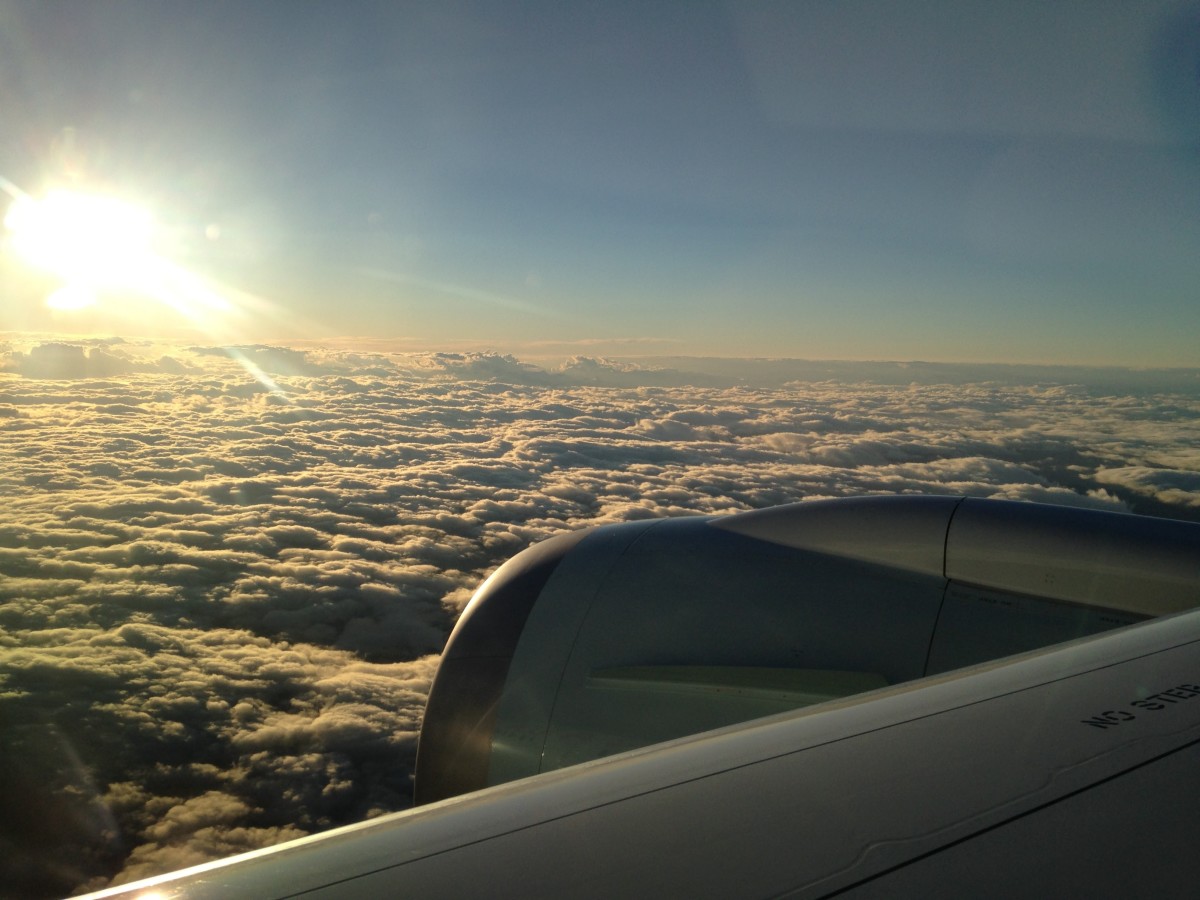Back in 2006 when I spent 3 months in Europe with my sister, I watched and kept up with a lot more TV shows than I do now… How I Met Your Mother, The Sopranos, 24, Lost, Veronica Mars (*sigh*), One Tree Hill, Scrubs, etc. (You can tell a lot about a person based on the shows they watch…). But since my trip was from June to September, missing episodes wasn’t really a concern. This time around, we’re travelling right in the middle of the TV season, so even though it’s a total luxury, I made it a point to make sure we can keep up with whatever TV shows we want to watch.
Prior to this trip, I was already a somewhat frequent traveller for work, and I’d always bring my Nexus 7 (2013) with me to watch TV shows, movies, and read books. The tablet has 32GB of storage, and I’d copy media to it for each trip. For this trip with Kait, our requirements are slightly different. We’re travelling for way too long for a 32GB device to fit enough media to last the whole trip, and we won’t only be using the device to consume media when we’re on planes and trains. We’ll want to be able to watch things together wherever we’re staying, and it’s a lot easier to do that on a TV than on a 7-inch tablet.
So, there are 2 functions we required in order to satisfy our need for TV from back home.
- Get/Download the latest TV Shows after they air.
- Play the downloaded shows on TVs wherever we’re staying.
Now, we have a Netflix membership which is good for some content, but other than Netflix produced television shows, the only other show that gets new episodes weekly on Netflix (in Taiwan at least) is Better Call Saul. That leaves “less mainstream” ways for us to get everything else we want to watch… but that’s never been much of an issue for me.
That leaves #2, getting the shows we want to watch on to the TVs where we’re staying. Or, for those interested in the more technical specifics, I want to smoothly stream Scene Standard 720p x264 encoded videos from my tablet (Nexus 7, 2013), phone (Nexus 5x) or laptop (Macbook Pro, 2009) wirelessly to a TV.

Our current (imperfect) solution uses a Chromecast to stream the videos from our devices to a TV. The Chromecast works with our phones (Android and iOS), tablet (Android) and Laptops (Chrome Browser). On top of the local content, it also lets us stream videos from services like YouTube and Netflix.
In order to stream local (downloaded) content from our devices, I needed to find an Android App that could “cast” the videos to the Chromecast. After some testing, the best (free) app I could find is called ES Chromecast Plugin. This plugin requires ES File Explorer (which is the file explorer I already prefer on Android), and it allows you to browse to whatever video file using ES File Explorer, and then cast it to a connected Chromecast device.
Another (free) option that works so-so is to Cast the entire device screen, then play the video using VLC. Interestingly, when you are casting the whole screen and start playing a video in VLC, it doesn’t actually play on the device and mirror to the Chromecat, but it plays exclusively to the Chromecast and the screen on your device shows playback controls. Overall, I find the ES Chromecast Plugin performs better.
For streaming from our laptops, if the video file can be played inside a Chrome tab, then you can just cast that tab. For everything else, I found an app called “Videostream for Google Chromecast” which works really well for streaming all sorts of video files (and it does the best job at streaming 720p videos).
Now, while this is a working solution, it isn’t ideal…
Your device and the Chromecast need to be on the same LAN in order for the devices to see each other. If you’re connecting to hotel WiFi (or some other public WiFi), the connected devices probably won’t have permission to see other devices on the network. Second, if the WiFi you’re connecting to has a captive portal (e.g. click here, view this ad, agree to the terms of service, etc), then the Chromecast device can’t get past the portal to connect to the internet.
The solution to this is to create your own LAN/WiFi for the Chromecast and your devices to connect to, so they are on the same network. I bought a travel router for just this purpose (I’ll write about it later).
Another problem, (or “feature”), of the Chromecast is that it MUST have internet connectivity in order to work… even if you’re only playing local content (i.e. not streaming video from the internet). I found this out the hard way, and it was pretty disappointing since it really doesn’t make any sense. The only logical explanation I can think of is that the Chromecast sends usage data back to Google, and even when you are playing local content, Google wants to know what you’re doing… They want to know so bad that they won’t let the Chromecast work even if everything your casting to it is local.
For the most part, this hasn’t been an issue for us, but it’s enough of an issue that makes it really hard to recommend our current solution (Or the Chromecast in general) to others. For example, say I have a TV, a Chromecast, and a photo on my (Android) phone… why on earth should I need Internet access to put that photo onto the screen through the Chromecast when both the Chromecast and my Phone are connected to the same network. Perhaps I expect too much from a < $50 device, but when it feels like it’s being artificially crippled, it’s frustrating.
The last issue (and the reason I’ll continue to look for a better solution) is that 720p videos don’t stream perfectly from my tablet to the Chromecast. The videos play fine on the tablet itself, and I’ve seen 720p-like video play from the Chromecast just fine when it’s streaming from Netflix, so I suspect the issue is either in the app I’m using to cast the video (ES Chromecast plugin was the best, but I tested others that performed worse, so software can definitely improve casting performance), or in the network throughput I’m getting with my travel router (more testing needed). The videos play fine for the most part, but the occasional stutter is really annoying.
So, this is what our current setup looks like:
– Google Chromecast (the newer one)
– HooToo TripMate TM06 Elite Travel Router
– Nexus 7 (2013)
– SD x264 TV Releases (1hr TV Shows come in at 200-300MB or so), since 720p videos stutter
– ES Chromecast Plugin (For ES File Explorer, Android)
– Videostream for Google Chromecast (For Video Files on PCs that won’t play in Chrome)
– Whatever TV (with HDMI Input) we have access to.
Thanks to this setup, Kaitlyn had the pleasure of enjoying nearly 3 hrs of The Bachelor Finale…






